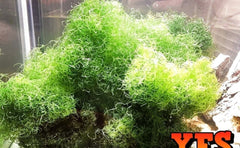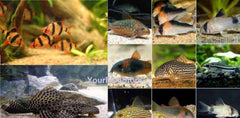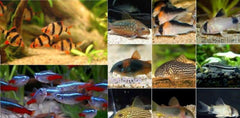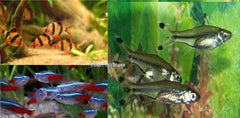Snowflake Eel - Med Approx 6" - 8" Each - Echidna Nebulosa
Ebay
$ 103.53

SNOWFLAKE EEL - MED APPROX 6" - 8" EACH - ECHIDNA NEBULOSA - FREE SHIPPING
Minimum Tank Size: 60 gallons
Care Level: Easy
Temperament: Semi-aggressive
Reef Compatible: With Caution
Water Conditions: 72-78° F, dKH 8-12, pH 8.1-8.4, sg 1.020-1.025
Max. Size: 2' 5"
The Snowflake Eel, Echidna nebulosa, also known as the Snowflake Moray and Clouded Moray is one of the most suitable eel species to keep in the home aquarium. They feature an intricate black and white ornamental patterning that resembles many different snowflakes across its body. The Snowflake Eel can grow up to 40 inches so a large tank, with a tightly sealed lid to prevent escapes, should be prepared. Feeding the Snowflake Eel can be dangerous, we recommend using feeding tongs to preserve your fingers. The Snowflake Eel is very hardy, active, acclimatizes well, and is easy to care for. This is probably the best eel to get if you are looking to care for your first eel. The Snowflake Eel is not considered reef safe because it will eat crustaceans, some corals, and small inverts and fish. Tanks should have plenty of live rock caves providing it places to hide. If liverock is plentiful enough, multiple Snowflake Eels can be kept together. Even though the Snowflake Eel is a nocturnal feeder, they are often active and visible during the day within the live rock.
When they are still small they are relatively docile making them one of the most popular eel species. They will eat a carnivorous diet consisting primarily of clams, crab, shrimp, squid, scallop, and fish meat, live or frozen.
This is a very hardy eel, but an escape artist. A 50 gallon or larger aquarium with plenty of live rock and a tightly fit canopy is ideal. Most of the eels that are lost in an aquarium are due to poorly sealed tanks. The Snowflake Eel is safe to house with any fish it cannot easily swallow. It can be housed with some invertebrates, like anemones and corals, but not crustaceans.
QUESTIONS & ANSWERS
Have a Question?
Be the first to ask a question about this.














